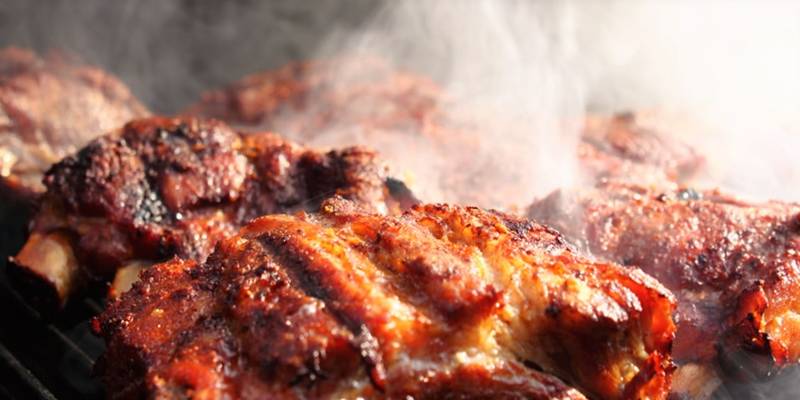Easy Ways to Master the Grill: Below are ten simple thing you can do to master your next backyard grilling party or event.
![]() 1. Grill over wood - Forget about the gas-versus-charcoal debate: Wood is the only fuel that adds real flavor to food. If possible, use whole hardwood logs in a wood-burning grill. The next best option is to burn hardwood chunks in a regular grill. (Light them in a chimney starter as you would charcoal.) As a last resort, toss some wood chips onto the coals of your charcoal grill—you use hardwood charcoal, right?—or in the smoker box of your gas grill just before you begin grilling.
1. Grill over wood - Forget about the gas-versus-charcoal debate: Wood is the only fuel that adds real flavor to food. If possible, use whole hardwood logs in a wood-burning grill. The next best option is to burn hardwood chunks in a regular grill. (Light them in a chimney starter as you would charcoal.) As a last resort, toss some wood chips onto the coals of your charcoal grill—you use hardwood charcoal, right?—or in the smoker box of your gas grill just before you begin grilling.
2. Keep your cool - You don’t need to bring steaks to room temperature before grilling: There’s no appreciable difference in cooking time. Steak houses keep meat refrigerated until they’re ready to cook it—for reasons of convenience and food safety—and so should you.
3. Line it up - Align the food on your grill in a neat row with soldierly precision. This helps you keep track of which foods went on the fire first, so you can turn them and take them off in order. Plus it looks more professional— and looking professional is half the battle.
4. Flip just once - You can’t get killer grill marks (the signature of master grillmanship) or accurately gauge cooking time if you’re compulsively turning over your steak every 10 seconds. To lay on a handsome set of crosshatches, rotate the steak 90 degrees after a couple of minutes of grilling.
5. Season before grilling - You might have heard that salt "bleeds" the juices out of raw meat: It doesn’t. Instead, it helps steaks form a savory crust as they cook. Just before putting the steaks on the grill, sprinkle on a generous amount of coarse salt and freshly ground black pepper.
6. Keep the grate hot, clean and oiled - This is the grill master’s mantra. Following it will prevent food from sticking and give it excellent grill marks. Before grilling, scrub the hot grate with a wire brush, then rub it with a tightly folded paper towel dipped in oil. Scrub the grate again when you’re finished cooking.
7. Grill your veggies - The dry heat of a grill intensifies a vegetable’s natural sweetness. Grill tender, watery vegetables, such as bell peppers and onions, directly over the coals. Grill dense or starchy vegetables, such as sliced potatoes and eggplant, using indirect heat, as far away from the coals as possible.
8. Grip, don’t stab - Use a pair of tongs—not a barbecue fork or, worse, a knife—to turn meat or move it around on the grill. Forks and knives poke holes in the meat that can allow precious juices to drain out. If you must cut and peek to check doneness, make a small slit with a knife.
9. Know when it’s done - For steaks, chops and chicken, poke the meat with your finger: If it feels soft and squishy, it’s rare; yielding, medium-rare; only slightly yielding, medium; firm and springy, well-done. For large cuts of meat, use an instant-read meat thermometer (even barbecue pros use them). Just don’t let it touch any bones, or you’ll get a false reading.
10. Let it rest - When you grill a piece of meat, its muscle fibers contract and drive the juices to the center of the cut. Meat served right off the grill will taste tough and dry, but a post-grill rest allows the muscle fibers to reabsorb the juices, resulting in a tender and succulent cut. Larger pieces of meat, like leg of lamb and pork shoulder, need to rest longer than steaks and chops—for approximately 15 minutes.
Also See..
- BBQ 101: 4 Great Burger Recipes
- BBQ 101: How Do I Clean The Grilling Grids
- BBQ 101: Cleaning Your Grills Burners
- BBQ 101: Barbecued Cookies On The Grill
- BBQ 101: Grilling The Perfect Char Dogs


